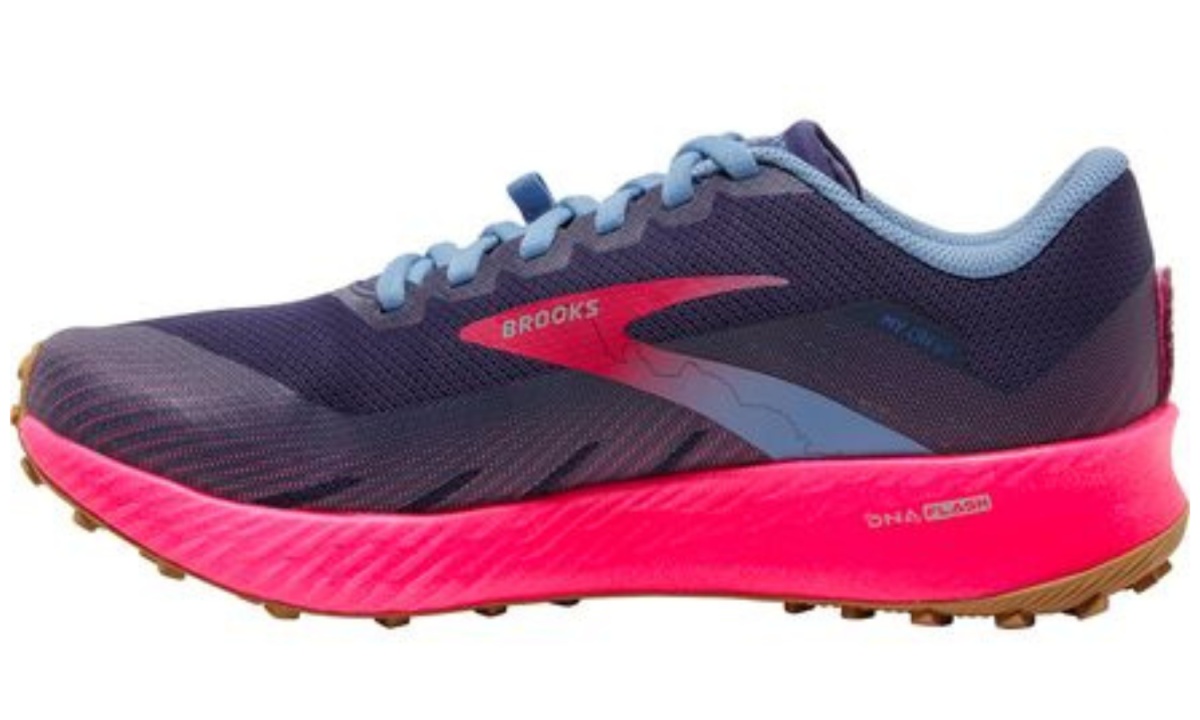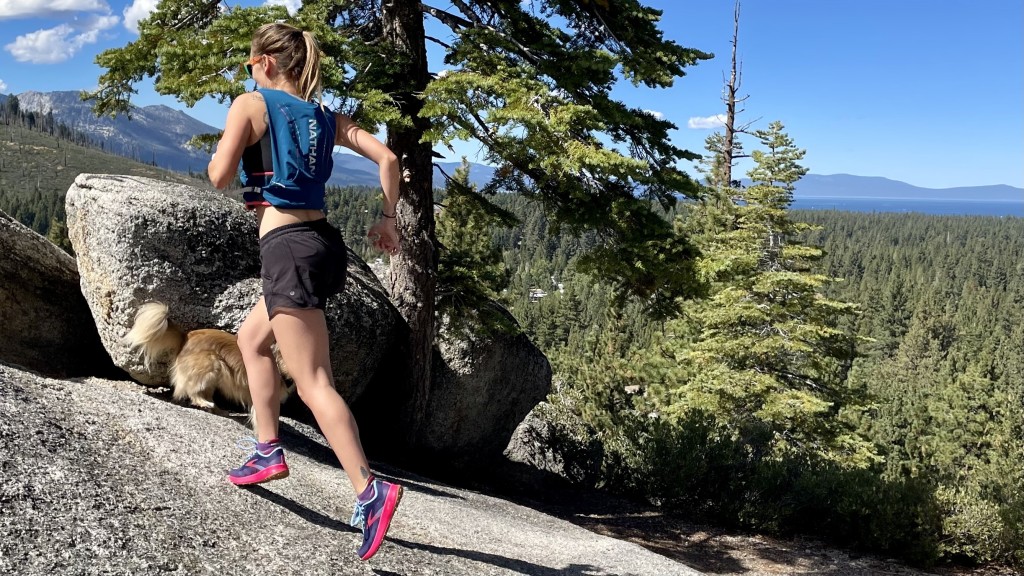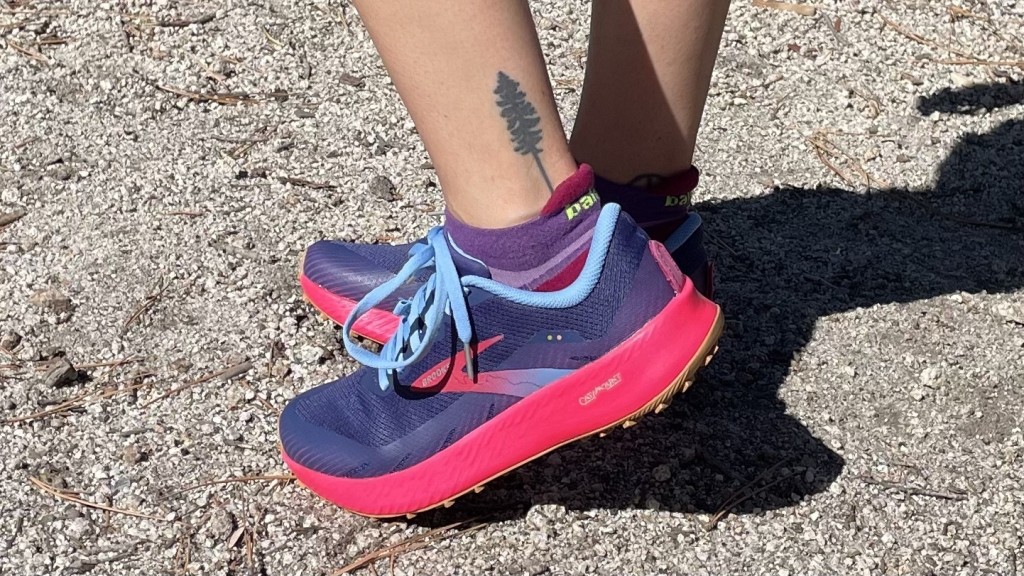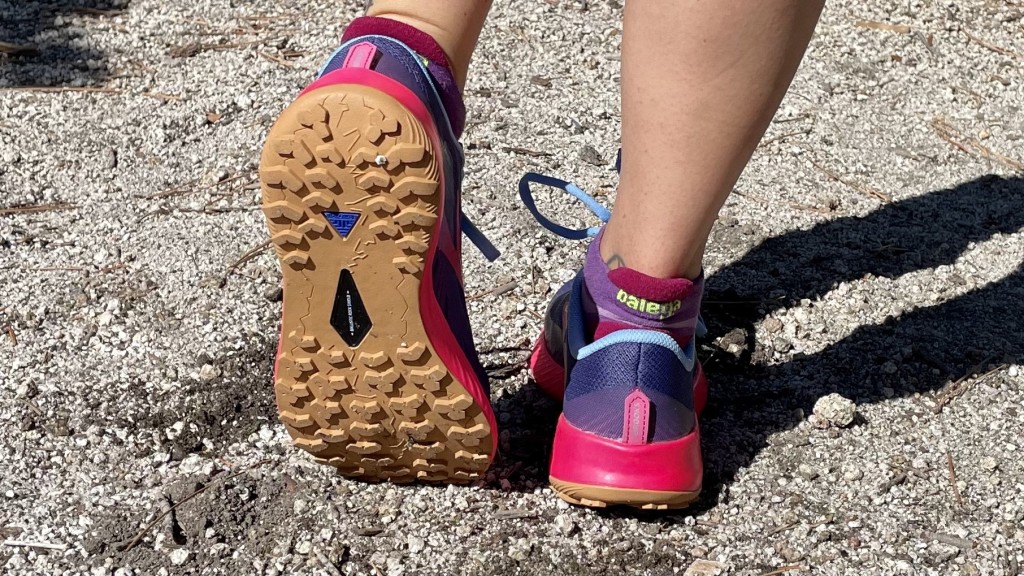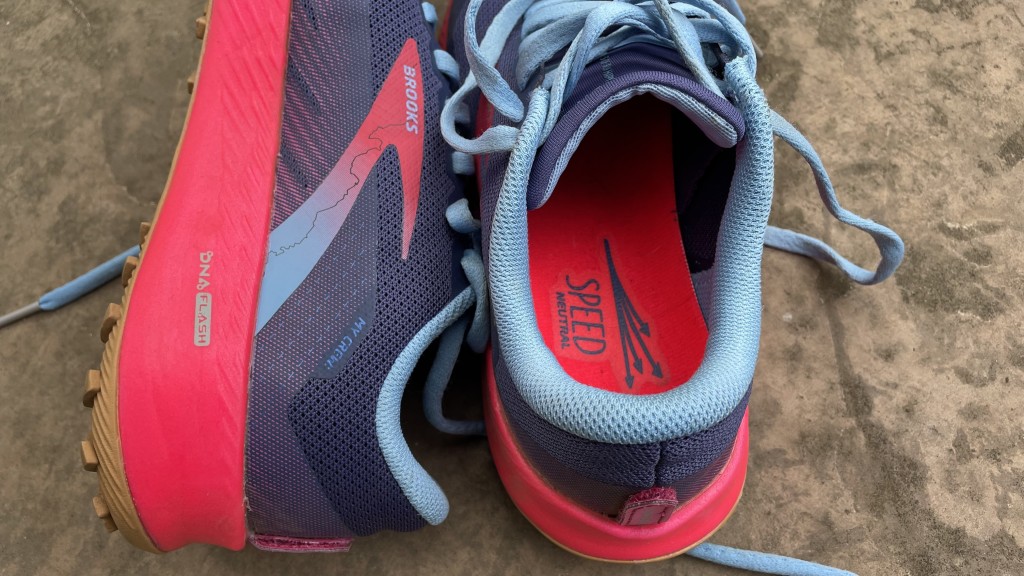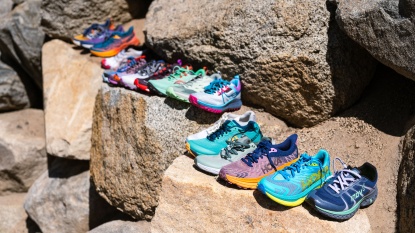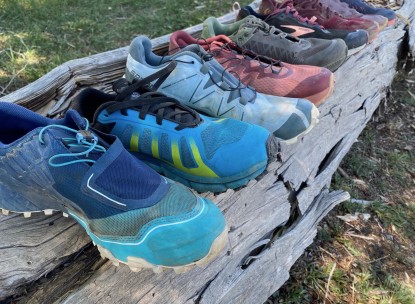Brooks Catamount - Women's Review
Our Verdict
Our Analysis and Test Results
Despite its 32mm stack height, the Catamount is a rigid running shoe with a low sensitivity rating. This pair of trail shoes feels stable and protective in motion, but we don't necessarily recommend them for long-distance excursions because of how stiff they are.
Performance Comparison
Foot Protection
This metric is one of the best categories for the Catamount, as its protective features are tougher than many we have seen. The Catamount features a Ballistic Rock Shield between the midsole and outsole. This rock plate provides fantastic protection, but it is super noticeable while you run.
The stiff toe cap doesn't provide as much vertical wiggle room as we prefer, but it does a great job protecting toes from accidental rock stubs. A similar rubber runs around the entire lower body of the shoe, which adds an extra layer of protection from rogue sticks.
The rubber-coated base and the engineered mesh come together atop the shoe to create a really protective outer body. Even after running super sandy trails, our feet hardly had any sand on them. We love the way the Catamount deflects water, sand, and other debris, especially because it further secured its place as one of the most protective shoes we tested.
Traction
The traction of the Catamount is really good for having such understated lugs. The lug shape and pattern provide a grippy surface that stands up to scree-covered trails. The three-pointed star-shaped lugs extend all the way up to the toe cap, a feature that we have grown to love. Having extra grippy components on the toe helps when you are trying to navigate tricky terrain.
We found that the traction of the Catamount wasn't as powerful due to the super rigid sole and lack of sensitivity. Toes need to have space to splay and act as grabbers for the terrain below. In our controlled tests, the traction on the Catamount scored amongst the most rugged trail shoes we tested. Unfortunately, when we took these trail kicks out into the field, the struggle to feel the trail beneath us led to more slips and twists than we are used to.
Sensitivity
As we have mentioned, the Catamount sits at a high 32mm off the ground, and this is a fairly standard stack height in maximalist running shoes that boast a lot of underfoot cushion and protection. It has a rock plate embedded into its sole for protection, but the shoe's platform is just epically hard. This is, by far, the most rigid platform out of all of the shoes we've tested. When combined with its naturally thick stack height, the result is a shoe that lacks sensitivity. There is very little arch support, and this melds with the shoe's unforgiving exterior to inhibit foot movement. We felt like the thick sole, overall rigidity, and intrusive rock plate totally dampened any bit of sensitivity that this shoe had to offer.
Stability
The Catamount is a super stable shoe if it fits your feet. Its polarizing and structure-forward design makes it a shoe that will either be stable or not, depending on the anatomy of your feet. For us, the shoe fit and provided us with a stable, albeit punishing, lineup of trail excursions. The Catamount has a 6mm drop, which is right within the realm of what we find to be incredibly stable. The heel only sits slightly higher than the toes, which keeps opportunities to roll ankles at bay. Because of the narrower-than-standard fit, this shoe holds your feet snug for added stability.
Comfort and Fit
On the surface, the Catamount is stiff and narrow. Unfortunately, neither of these elements changed, softened, or loosened up after our break-in period.
The toe box is decently wide, but the firm edges don't entice your toes to splay while running. In fact, after a few runs in these shoes, we found that the outer edges and soles of our feet were incredibly sore. We run a lot of trails, and it is uncommon that we ever end up with sore feet or blisters. The heel cup on the Catamount is comfortable and snug, which did prevent slippage, so heel blisters weren't a problem.
Brooks advertises the Catamount as a responsive trail shoe, and for short jaunts, we found that the stiff platform is indeed quite responsive. For us, though, comfort is key for longevity on runs and in running as a sport. It just didn't feel worth it to pound trails in a shoe that left us feeling sort of desperate to take it off of our feet. This is especially true since other trail running shoes provide the same snappy launchpad without the pain.
If you like a stiff shoe and have a narrower-than-average foot, you'll probably enjoy the sensation of running in the Catamount. It's not a bad running shoe; it just wasn't for us. Our final criticism is with the laces. To be clear, the lacebed is one of the more comfortable elements of the shoe, but the laces are very soft. Because the laces are so much softer, they attract everything that you pass. We struggled with getting tangled up in sticks, manzanita bushes, and more while running in the Catamount.
Weight
For all of its protective elements, the Brooks Catamount weighs in below average. With each womens' size 7 shoe weighing 7.94 ounces, this trail shoe earned great marks in this metric. We never felt like the weight of the Catamount was problematic as we ran. It is quite a lightweight shoe for having such great traction and a protective casing.
Should You Buy the Brooks Catamount?
As is often the case, we recommend trying on your trail running shoes before you buy them. This is especially true for a shoe like the Catamount. This shoe is tricky. On the one hand, it has so many awesome features and is overall a great shoe. But on the other hand, it didn't fit us properly, so we had a really hard time settling into running in it. If the Catamount fits you and satisfies your trail running needs, it's likely to be a fantastic shoe. If you have wide feet and are prone to blisters, skip the Catamount and opt for something softer with a bit more space instead. But if a narrow and rigid shoe sounds like it might be the perfect match for you, enjoy the Catamount and all of the protection it offers.
What Other Trail Running Shoes Should You Consider?
If the idea of a rigid shoe doesn't sound appealing, take a look at the Hoka Torrent 3 and the Saucony Peregrine 13. Both offer fantastic traction with a more flexible outsole; the Torrent has much more cushion than the speedy Peregrine. If you want a completely flexible shoe, check out our best overall trail running shoe for women, the Salomon S/Lab Ultra 3.


